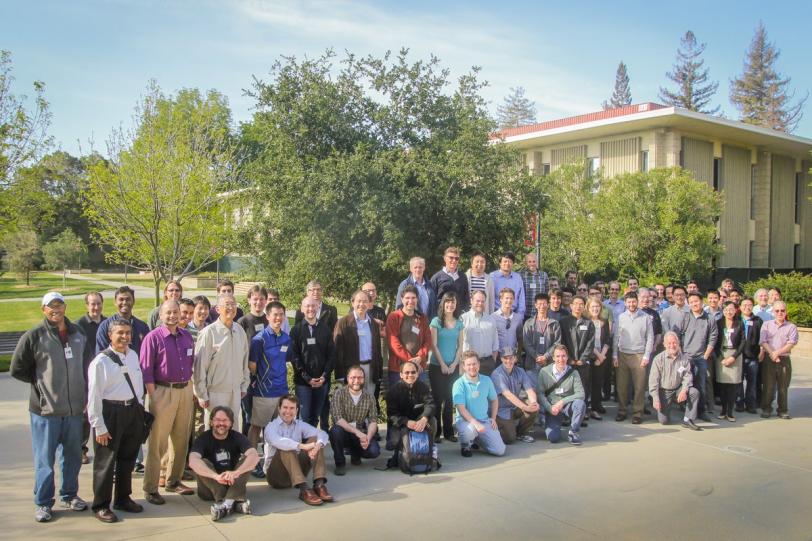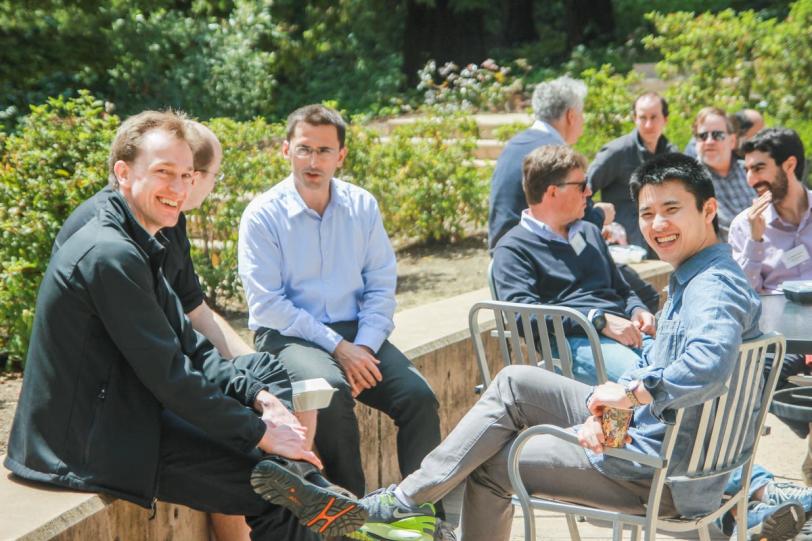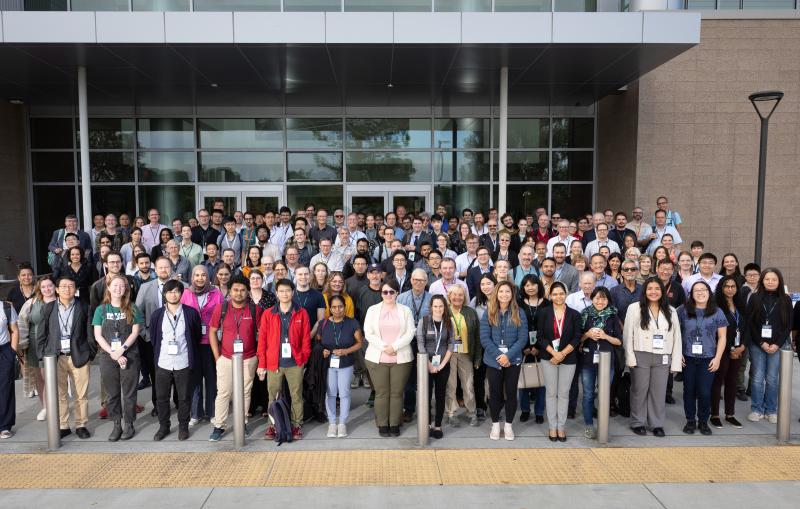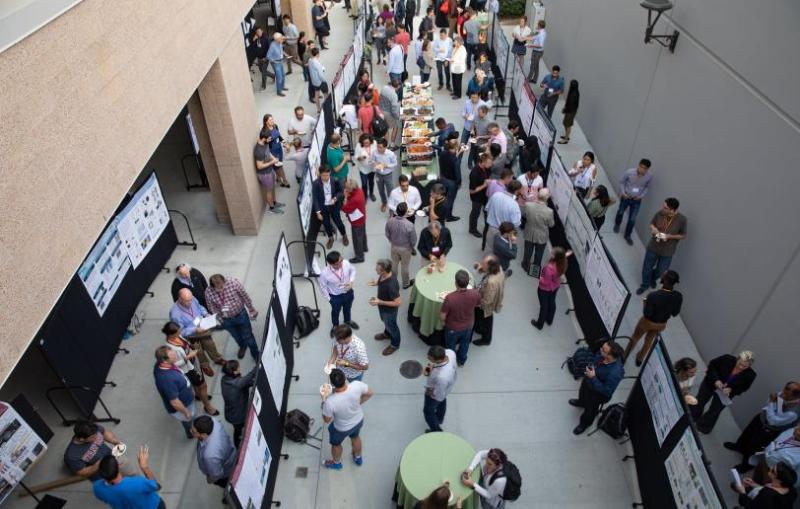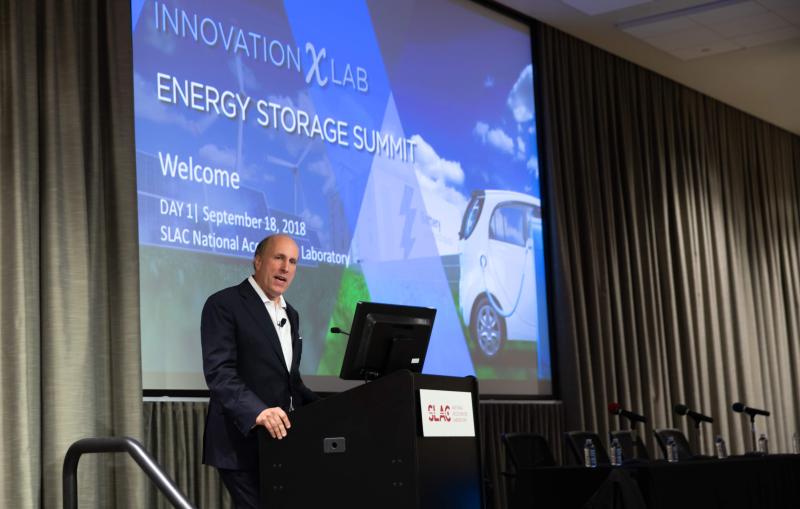Physics Beyond the Large Hadron Collider
SLAC recently hosted a forward-looking group of theoretical and experimental particle physicists. Their purpose: Follow the science to determine what a post-LHC collider could teach us about the universe.
By Lori Ann White
An international group of about 100 physicists gathered last week for the first formal workshop at SLAC to explore the world of high-energy physics beyond CERN's Large Hadron Collider, which is famous for unearthing the Higgs boson – and even beyond the International Linear Collider, a facility that hasn't been built yet. Their focus: a 100 tera-electronvolt (TeV) proton-proton collider about seven times more powerful than the LHC will be when it reaches its maximum energy of 14 TeV in 2015.
Getting Ready for the Future
"It does seem like a crazy thing to hold a workshop like this when the LHC hasn't even hit 14 TeV," said Tim Cohen, a member of the SLAC particle theory group and one of the organizers of the workshop, along with SLAC colleagues Michael Peskin and Jay Wacker and experimentalist Mike Hance from Lawrence Berkeley Lab. "But I think the Snowmass process we went through last summer has the HEP community really looking toward the future." The Snowmass process refers to a lengthy planning and consensus-building effort by the high-energy physics community that culminated in a week-long meeting, during which they set long-term priorities for the field.
Peskin said he was surprised at the amount of interest shown in discussing 100 TeV when five years ago the world record was less than 2 TeV. "We expected an intimate workshop of about 30 people, and we ended up with more than 100 people registered," he said. "But I think the community has begun exploring the physics of 100 TeV colliders as a long-term vision for the field, following the operation of the LHC. We felt that the workshop would be a timely way to assist that process."
Big Questions About High Energies
The big question at the SLAC workshop was "Why?" Why build such a powerful machine? What new insights into fundamental physics might it make possible?
One use for a 100 TeV collider is to more thoroughly explore the Standard Model – the name given to our current best description of matter and energy at its most fundamental levels. Work on fully describing the Higgs boson has just begun, and the possibility exists that the Higgs itself is composite – made up of other, as-yet-unknown particles that could only be found at higher energies. A 100 TeV machine would produce Higgs bosons at 15 times the rate of the 14 TeV LHC, allowing for precise measurements of many of their most important properties.
Also discussed during the workshop were some of the most pressing conundrums in physics today, such as the nature of dark matter and whether supersymmetry – the idea that each fundamental particle has a more massive, not-yet-discovered partner – exists. Neither has been detected at the LHC, but there is theoretical support for their detection with a 100 TeV machine.
The second pressing question was "How?" How can such a massive machine be realized, and how must physicists adapt to take advantage of what it can reveal?
To cover the first "how," speakers discussed several technical advances required to build a 100 TeV machine, such as stronger magnets, more sensitive detectors and better tools for analyzing the deluge of data.
The second "how" is more subtle.
The higher energies of collisions at a 100 TeV machine might reveal new phenomena, but it will also result in known particle interactions – and lots of them – and some of these known interactions and decays could muddy the data at higher energies.
For example, said Peskin, "Classes of events that are easy to recognize at the LHC become confused with other types of events at 100 TeV" – an issue that must be carefully considered in designing the experiments. ”The question that we really need to address – and which we began to discuss at the workshop – is whether we need to do physics in a qualitatively different way from what we are doing at the LHC."
"All of these discussions are in their absolute infancy, but I think they're necessary," said Hance. He pointed to the 30-year timescale of the LHC: "It's good to get the people who will build this future collider inspired now."
SLAC is a multi-program laboratory exploring frontier questions in photon science, astrophysics, particle physics and accelerator research. Located in Menlo Park, California, SLAC is operated by Stanford University for the U.S. Department of Energy Office of Science.
DOE’s Office of Science is the single largest supporter of basic research in the physical sciences in the United States, and is working to address some of the most pressing challenges of our time. For more information, please visit science.energy.gov.
